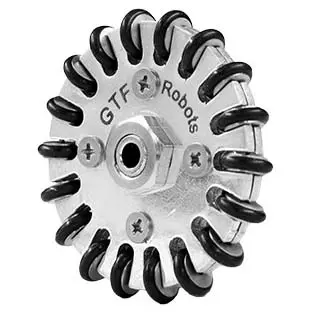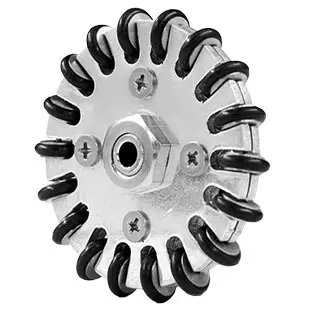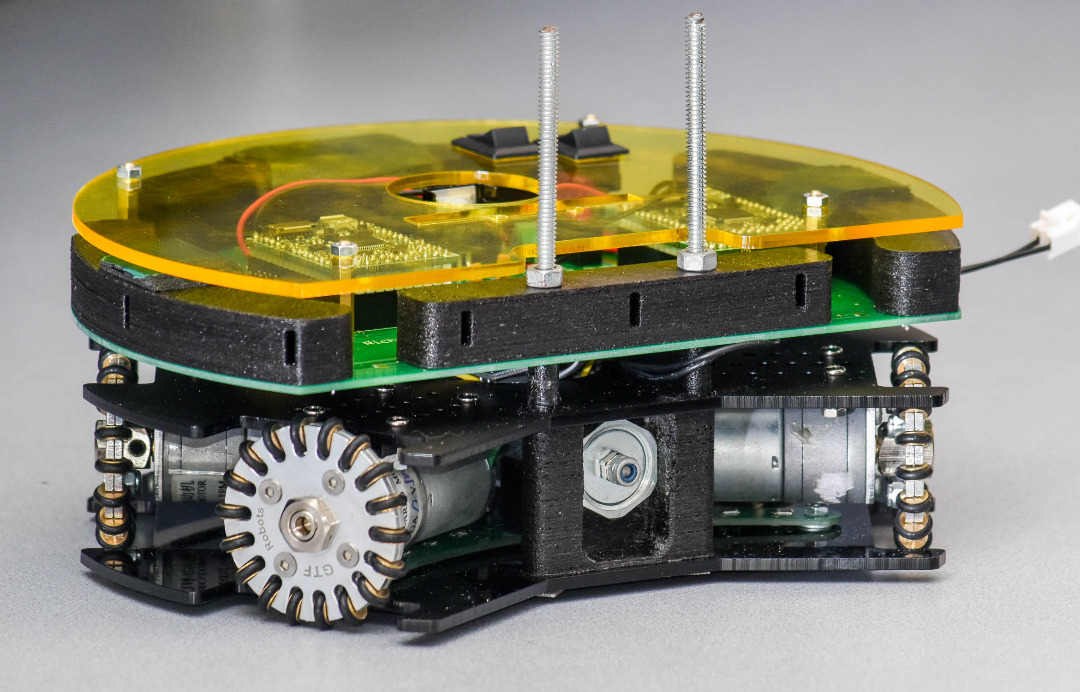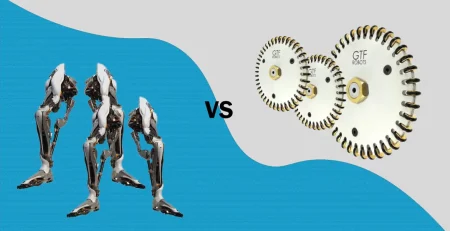What is Omni Wheel and How Does it Work?
What is omni wheel ? this question might be the reason why you’re here right now. If you’re new to robotics field and still don’t know about these wheels, you’re in the right place. In this article we’re going to talk about what omni wheels are and how they work.
What is Omni Wheel?
Omni Directional Wheel is a type of wheel that can freely role in more than one direction.
Omni wheels are specifically designed to create lateral movement in addition to the normal rotation which is forward and backward movement. This is the main reason why they have become so popular among robotic students, industrial robot manufacturers and even unprofessional people who are just interested in creating robots.
How do Omni wheels work?
In the previous section, we talked about Omni wheels’ side to side movement.
This ability is made possible by having small rollers, we call it ‘’small wheels’’ mounted along the main wheel circumference. In a fixed robot, movement of wheel is prior to the movement of robot to the sides. In other words, robots with fixed wheels can only move to the sides if their wheels start moving. But Omni wheels can move laterally without the need to move forward first.
What are Rollers?
Rollers, also called discs are small wheels mounted around the wheel. Omni wheels can have a few or many rollers. The rollers are made out of rubber to minimize the amount of friction caused by rolling on the ground and as a result reduce the corrosion that might cause by something like metal. However, in some cases rollers are intentionally are being made of metal to decrease the rolling resistance and make your robot go faster.
These rollers have a crucial role in robot movement. if you search for these wheels you can see that there is an empty space between each roller. if the space between rollers are considerable, chances are, the wheel will rub against the ground. so in order to prevent rolling friction, this empty space must be filled.
This empty space can be filled with mounting more rollers on the wheel. but there is another way to fill this empty space. We can also use a double plate Omni wheel. these specific wheels consist of two Omni wheels which are attached together in way that can fill the empty spaces between their rollers. This way when the rollers start moving, there will be no friction between the main body of the wheels and the ground.
if you want to get more information on Omni wheels and how they work, you can check out our article “get rolling with Omni directional wheels” which was published on servomagazine as a guest post.
Looking for Omni Wheels?
Check our Omni wheels collection, choose your desired one and buy at best price.
What are Omni Wheels Used for?
We talked about Omni wheels and how they work, but you may be wondering what are the use of them?
They are used in drivetrains mostly holonomic drive systems to move your robot on the horizontal axis. In the past, there wasn’t any way for creating holonomic movement which means having the same controllable degrees of freedom as the total degrees of freedom. But with the rise of Caster and Omni wheels, the holonomic drive systems came to play.
To better understand this, imagine yourself trying to park parallel in a small space that you have found. If you know how to drive, you probably know you need to stop parallel to the front car and then pull in the space by turning your steering wheel. As you can see, you cannot move your car to the space without turning the steering wheel, because of the limited range of motion that cars provide. This means your car has a non-holonomic drive system in which the controllable parts which is the brake and acceleration are less than the total level of freedom, so you’re not able to move to the sides without turning first. But in holonomic drive systems, like a wheeled robot with Omni wheels, you can move your robot to any direction.
Omni wheels are now widely used among roboticists across the world to create different drivetrains and join in robotic competitions like RoboCup, FIRST and more. In RoboCup middle size leagues (MSL) which is a soccer league, using an Omni wheel in the robot player is required, because the robot soccer player needs to rotate in any direction as fast as possible to be able to pass the ball, increasing the likelihood of scoring a goal and winning against the opposing team.
4 Things to Consider when Choosing Omni Wheels for your Robots
There are different types of Omni wheels in the market that you can choose based on your requirements and needs. But there are some factors you need to consider:
- First of all, you need to specify the number of wheels you need which depends on your drivetrain. In a h-drive, you need to have at least 4 wheels. But in a kiwi drive, you need 3 wheels. The numbers of wheels for any drivetrain affect efficiency, stability and ease of movement.
- Secondly, you have to keep in mind that the size of a wheel plays a crucial role in your robot ability to carry more weight and also go faster. the bigger the wheel, the more weight it can withstand. But the downside is that the speed will also decrease, due to its large diameter.
- Fourthly, it’s important to determine what kind of material you are looking for. Depending on the surface, required application and your budget, you can choose different materials for different part of these wheels. In some applications, you need to create more friction with floor, but in some, you might need to reduce it to maximize your robot speed. So it’s up you to choose whether plastic or metal can actually satisfy your needs or not. It’s worth noting that if you’re tight on budget you can always go for cheaper options.



Wrapping up
In this article, we tried to give you a brief and simple description of how these Omni wheels work and how you can choose them with some considerations. as you’ve learned, there are different types of Omni wheels with different design, measurements and materials. if you need a specific wheel but can’t find it anywhere, you can always customize your wheel on our online shop.



Leave a Reply